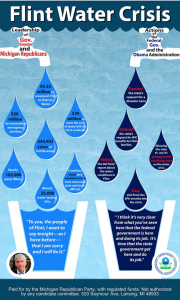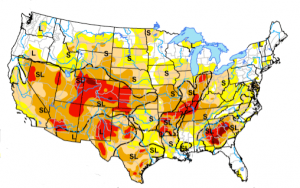How Hillary Turned Her Support for Welfare for Banks into an Auto Bailout Attack
For a campaign that has spent days insisting Bernie Sanders should not launch attacks against her, the Hillary Clinton campaign sure engaged in some dishonest hackery last night.
During the debate in Flint, Hillary attacked Bernie for “vot[ing] against the money that ended up saving the auto industry.” She was talking about a January 15, 2009 attempt to withhold the second $350 billion of TARP funding that failed (here’s the resolution); Bernie voted not to release those funds. But the vote was not directly about auto bailout funding. It was about bailing out the banks and funding what turned out to be completely ineffective efforts to forestall foreclosures.
It is true that Bush’s failure to fund an auto-specific bailout meant that TARP funds got used to fund the $85 billion auto rescue (Bush had already spent some money on the auto companies — basically just enough to ensure they’d go under on Obama’s watch, but not enough to do anything to save them). But that’s not what the vote was (and there might have been enough money for the auto bailout in any case).
Larry Summers’ two letters in support of the additional funding (January 12, Janaury 15) in support of the additional funding certainly didn’t describe it as an auto bailout bill. He mentioned “auto” just three times between the two of them. In the January 12 letter, in support of auto loans to consumers, and in the January 15 letter, limits on what I believe is a reference to GM Finance (now Ally)’s Christmas holiday move to turn into a bank so it could access funding. Contemporary reporting on the vote also did not mention the auto bailout (though there had been discussion that it might be used the previous month).
Moreover, there had been an auto bailout vote in the Senate (on a bill already passed by the House) on December 11, which failed. Both Bernie and Hillary voted in support.
So while Hillary’s attack was technically correct — Bernie did vote against giving Jamie Dimon more free money, which had the side effect of voting against the second installment on the fund that would eventually become the auto bailout — he did not vote against the auto bailout.
But Hillary’s attack did its work, largely because national reporters appeared completely unaware that they were fighting about TARP much less aware that there had been votes in December that directly pertained to the auto bailout. Even some local reporters now appear unaware of what went down in 2008-9. John Podesta helped matters along by sowing confusion in post-debate speeches.
Here’s one of what will end up being several exceptions to the shitty reporting on this that will come too late for people to figure out what actually happened.
During the testy exchange over the auto bailout, Clinton called Sanders a “one-issue candidate” for voting against the release of $350 billion in Jan. 15, 2009, to continue funding the bailout of the nation’s banks and mortgage lenders.
Sanders joined seven Democratic senators in voting against the second wave of TARP funds. President Barack Obama ended up using some of TARP to fund the $85 billion rescue of GM, Chrysler and their auto lending arms.
“If everybody had voted the way he did, I believe the auto industry would have collapsed, taking 4 million jobs with it,” Clinton said.
[snip]
David Axelrod, a former top adviser to President Barack Obama, questioned Clinton’s attack on Sanders’ voting record in the middle of the debate.
“It wasn’t explicitly a vote about saving auto industry,” Axelrod wrote on Twitter.
U.S. Sen. Debbie Stabenow, a Clinton supporter, said after the debate that senators, including Sanders, were aware the TARP money would be used to aid the domestic auto industry.
“A lot of folks said we shouldn’t do it because somehow it was helping the banks,” said Stabenow, D-Lansing. “It was the auto bailout we were talking about. I was very clear with colleagues that we had to do this.”
Stabenow’s comment, incidentally, is proof that the money shouldn’t have been granted as it was (it wasn’t spent on auto companies until much later). While she’s right that there had been public discussion of spending some money on the auto bailout, there obviously was still so little limiting what the Executive could do with the money that there needed to be nothing explicit supporting the auto bailout to make it happen. The flimsiness of the guidelines is one of the things that enabled the Obama Administration to avoid providing real foreclosure relief, choosing instead to “foam the runway” for banks.
Don’t get me wrong. Bernie did a number of other things at the debate that hurt him last night, such as his comment about ghettos that suggested all African Americans are poor and no whites are. I think, too, the optics of his efforts to stop Hillary from interrupting him as well as his own gesticulating while she was making responses will go over poorly.
But the auto bailout attack was a pretty shameful ploy, one that otherwise would make it fair game to really hit on Hillary’s own actions in a way Bernie has not yet done. That said, it was also a probably perfectly timed attack, because it will ensure victory for Hillary on Tuesday, eliminating one of the last possibilities that Bernie might really challenge Hillary.
Update: As it turns out, Hillary should be attacking Stabenow according to her own standards, because Stabenow voted no on the first TARP vote that actually paid for the first tranche of funding to the auto companies. (Here’s the second, January 2009 one.)




